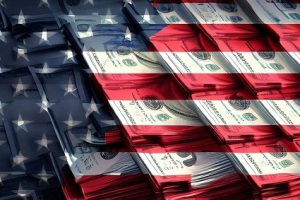Powell At Jackson Hole: The “Time Has Come For Policy To Adjust”
Key Points
- Fed Chair Jerome Powell spoke Friday at the annual Jackson Hole Economic Symposium.
- At the event, he said the “time has come” to adjust monetary policy.
- Stocks were moving higher on Friday after the speech.
At Jackson Hole, Fed Chair Jerome Powell said he is confident that inflation is heading back toward the target rate of 2%.
In his much-anticipated address at the annual Jackson Hole Economic Symposium, Federal Reserve Board Chair Jerome Powell did not disappoint those hoping the Fed cuts interest rates.
While Powell stopped short of explicitly saying the Federal Open Market Committee (FOMC) will reduce the federal funds rate at its next meeting on September 11 and 12, he clearly indicated to the audience of central bankers, policymakers, academics, and economists that things are headed in that direction.
“The time has come for policy to adjust,” Powell told the assembled Friday morning at the annual retreat hosted by the Kansas City Federal Reserve. “The direction of travel is clear, and the timing and pace of rate cuts will depend on incoming data, the evolving outlook, and the balance of risks. We will do everything we can to support a strong labor market as we make further progress toward price stability.”
The markets surged higher on Friday after the speech, made at 10:00 a.m. Eastern time and 8:00 a.m. in Jackson Hole, Wyoming. The Russell 2000 rose the most, up 3% on Friday, while the Dow Jones Industrial Average climbed more than 450 points, or 1.1%. The Nasdaq jumped 1.4%, or 250 points, while the S&P 500 surged 1.1%, or nearly 60 points, as of 12:00 p.m. ET.
Powell’s “confidence has grown”
The market gains were somewhat muted, as a September rate cut seems already baked into expectations. CME’s FedWatch monitor of interest rate traders is 100% certain rates will be reduced in September, the only question is will it be a 25 point or 50 basis point reduction.
According to FedWatch, 65.5% of those surveyed say it will be a 25 basis point reduction while 35.5% say it will be a 50 basis point cut.
In his address, called “Reassessing the Effectiveness and Transmission of Monetary Policy,” Powell expressed his confidence in continued disinflation.
“Inflation is now much closer to our objective with prices having risen 2.5% over the past 12 months,” Powell said. “After a pause earlier this year, progress toward our 2% goal has resumed. My confidence has grown that inflation is on a sustainable path back to 2%.”
He also said the labor market has cooled considerably and is not likely to be a source of elevated inflationary pressures anytime soon. Powell added that the Fed does not welcome any further cooling in labor market conditions.
“With an appropriate dialing back of policy restraint, there is good reason to think that the economy will get back to 2% inflation while maintaining a strong labor market,” Powell said. “The current level of our policy rate gives us ample room to respond to any risks we may face, including the risk of unwelcome further weakening of labor market conditions.”
Soft landing?
In his roughly 20-minute address, Powell also talked in detail about the causes of the historically high inflation rates as well as reasons it came down so fast.
“By mid-2022 the labor market was extremely tight with employment increasing by 6.5 million jobs from the middle of 2021,” Powell said. “This increase in labor demand was met in part by workers rejoining the labor force as health concerns began to fade.”
At that time, labor force participation was well below pre-pandemic levels and there were nearly twice as many job openings as unemployed persons signaling a severe labor shortage. It was also around this time, June of 2022, that inflation peaked at 7.1%.
“Some argued that getting inflation under control would require a recession and a lengthy period of high unemployment and I expressed our unconditional commitment to fully restoring price stability and keeping at it until the job is done.” Powell said. “The FOMC did not flinch from carrying out our responsibilities and our actions forcefully demonstrated our commitment to restoring price stability.”
The Fed responded by raising rates 425 basis points in 2022 and another 100 basis points in 2023 until July of 2023. Rates have remained at 5.25% to 5.50% since then.
Powell also noted that while unemployment has risen to 4.3%, almost a point higher from the lows in 2023, it is not because of elevated layoffs, as is typically the case in an economic downturn. Instead, it is due mainly to a substantial increase in the supply of workers and a slowdown in hiring.
“The 4.5 percentage point decline in inflation from its peak two years ago has occurred in a context of low unemployment, a welcome and historically unusual result,” Powell said.
This post originally appeared at ValueWalk.com.
Category: Uncategorized





